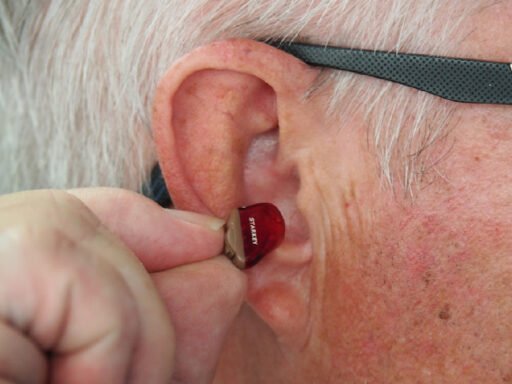Have you been experiencing persisting tooth pain or sensitivity lately? Are you worried that your dental discomfort could be a sign of a more severe issue like a root canal infection? If so, you’ve landed in the right place. This article will guide you through the process of determining whether you might need a root canal treatment.
Remember, this guide and the accompanying ‘do I need a root canal quiz’ are meant to be informative and should not replace a professional dental consultation.
Understanding Root Canal Treatment
A root canal treatment, also known as endodontic therapy, involves the removal of infected or inflamed pulp from the tooth’s interior. This dental pulp, comprising nerves, blood vessels, and connective tissue, is crucial for the growth and development of teeth.
When the pulp gets damaged due to decay, trauma, or other factors, it can trigger severe pain and lead to serious oral health problems. During a root canal procedure, the dentist eliminates the infected pulp, cleans and disinfects the tooth, and fills it to prevent further infection – all with the aim of preserving the natural tooth and averting extraction.
In the past, root canal treatments were notorious for being painful. However, with modern dental techniques and anesthesia, the procedure has become significantly more comfortable.
Signs You May Need a Root Canal
Sometimes, it can be challenging to determine whether you require a root canal treatment. For this reason, we’ve curated a list of common symptoms that might indicate a root canal infection.
- Persistent Tooth Pain: This could be the first sign of an issue, signifying an infection in the tooth pulp. The pain could be constant or intermittent, triggered by chewing, speaking, or certain foods.
- Sensitivity to Hot or Cold: If you experience a dull ache or a sharp pain when consuming hot or cold foods or drinks, it may suggest an infected pulp. The sensitivity arises from damage to the tooth’s nerves and blood vessels.
- Tooth Discoloration: An infected tooth may darken due to internal tissue damage. Look out for any dark spots or a grayish hue on your tooth’s surface.
- Gum Swelling: Inflammation in the tooth’s pulp can lead to swelling and tenderness in the gums surrounding the affected tooth.
- Bad Breath: Persistent bad breath, despite regular brushing or using mouthwash, could indicate a pulp infection.
If you’re experiencing any of these symptoms, it’s time to consult a dentist.
Do I Need a Root Canal Quiz
If you’re unsure whether your symptoms align with the signs of a root canal infection, take a moment to complete our ‘do I need a root canal quiz’.
- Are you experiencing persistent pain in or around a tooth?
- Do you have sensitivity to hot or cold temperatures?
- Is one or more of your teeth discolored?
- Are your gums swollen?
- Do you have persistent bad breath?
- Have you recently chipped or cracked a tooth?
- Does your tooth feel loose?
- Have you been running a fever?
If you answered yes to any of these questions, it might suggest a need for a root canal treatment. However, remember that this quiz is not a replacement for a professional dental evaluation.
How to Prevent the Need for a Root Canal
Prevention is always better than cure. Here are some tips to maintain good oral health and potentially avoid the need for a root canal treatment:
- Brush and floss your teeth daily to remove plaque and food particles
- Regularly visit your dentist for check-ups and professional cleanings
- Limit the consumption of acidic and sugary foods and drinks to minimize tooth decay
- Wear a mouthguard when participating in sports or activities that may expose your teeth to injury
- Seek immediate dental care if you experience any dental issues
What to Expect During Root Canal Therapy
If you do require a root canal treatment, here’s an overview of what to expect:
- Diagnosis and Preparation: The dentist will conduct a thorough examination, including X-rays, to determine the extent of the infection.
- Anesthesia: Local anesthesia is administered to numb the affected tooth and surrounding area.
- Removal of Infected Pulp: The dentist will create a small opening in the tooth’s crown to access and remove the infected pulp.
- Cleaning and Sealing: After removing the pulp, the dentist cleans, disinfects, and fills the tooth to prevent future infections.
- Restoration: In most cases, a dental crown is placed over the tooth to protect it and restore its function.
Following Up After a Root Canal Treatment
Post-root canal care is crucial to ensure a smooth recovery. Here are some tips:
- Maintain good oral hygiene practices
- Avoid chewing on the affected side until your follow-up appointment
- Use over-the-counter pain relievers to manage any discomfort
- Attend all follow-up appointments
- Limit hard, chewy, or sticky foods immediately after the procedure
Conclusion
With the help of this article and our ‘do I need a root canal quiz’, you should now have a better understanding of the signs and symptoms of a root canal infection. However, remember that these tools are not a replacement for a professional dental evaluation. If you’re experiencing any of the symptoms mentioned in this article or the accompanying quiz, it’s crucial to consult a dentist promptly for proper diagnosis and treatment.





